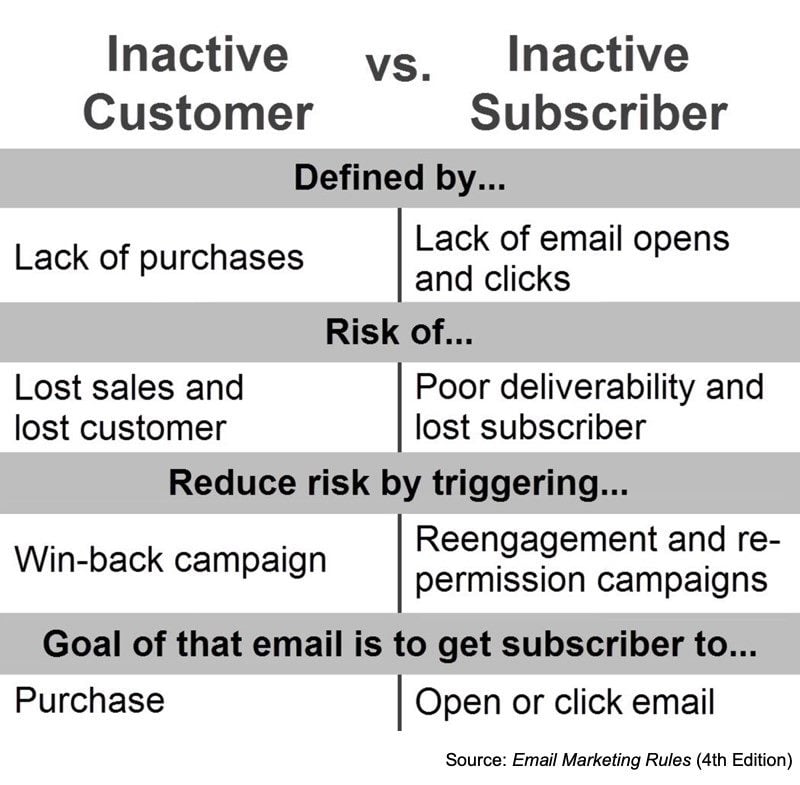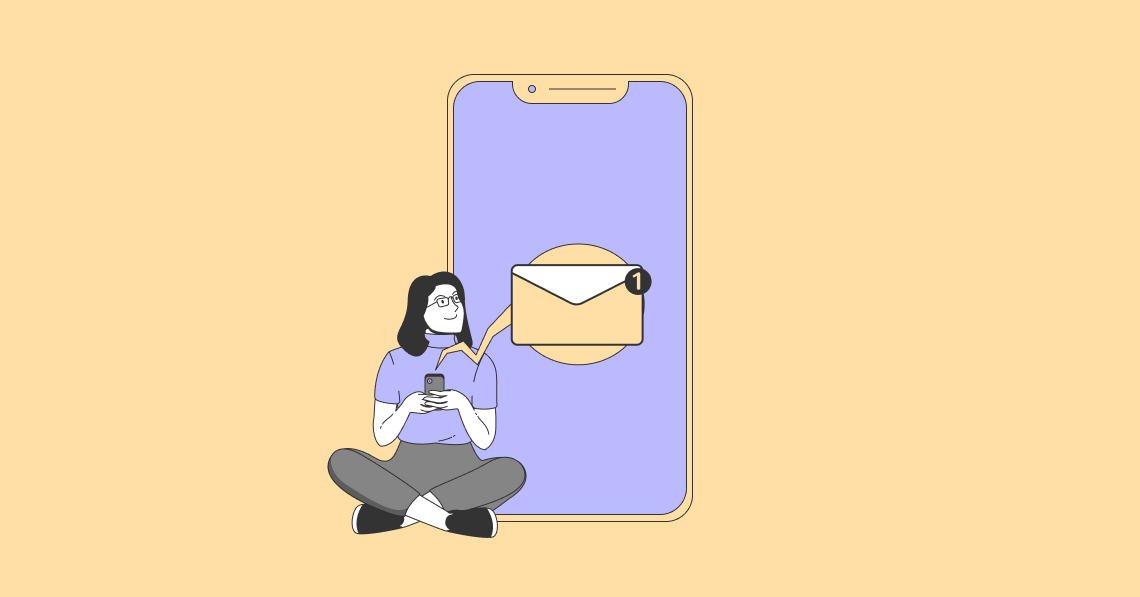The Gist
- Rethink email rules. Unsubscribes do not harm your sender reputation, contrary to common misconceptions.
- Metrics matter. Email clicks don’t influence sender reputations; engagement does, shaping email deliverability.
- Campaign clarity. Differentiating between reengagement, win-back, and re-permission email campaigns is crucial.
The web has always been a dicey place to get email marketing advice. Too many people incorrectly think that email marketing hasn’t changed much over the years, so outdated information tends to get recirculated over and over and over.
Based on the rise in factual inaccuracies I’ve been seeing in recent months, I think generative AI may be making this problem worse. That’s because LLMs are trained on this outdated information and it appears some folks are using generative AI to provide background for their articles.
Rather than share all of the inaccurate and confusing statements I’ve seen lately (and potentially reinforce that bad information in future training for generative AI models), I’ll focus on the truth of how email marketing works.
Too many people incorrectly think that email marketing hasn’t changed much over the years, so outdated information tends to get recirculated over and over and over in piece about email marketing myths that are wrong. visualpower on Adobe Stock Photos
Related Article: The 5 Biggest Changes From a Decade of Email Marketing Change
Unsubscribes Don’t Affect Your Sender Reputation
Inbox providers like Google filter spam based on more than 100 user actions. However, unsubscribes aren’t one of them.
It’s possible the new deliverability requirements by Google and Yahoo are creating some confusion here, since those rules include enabling list-unsubscribe functionality (more on that later). However, part of the intent here is to separate out users who were using the report spam button to simply unsubscribe. You can clearly see that in action when you try to report emails as spam in Gmail now, as you’ll be asked whether you want to unsubscribe or truly report the email as spam.
Whether subscribers unsubscribe via that native unsubscribe link powered by list-unsubscribe or they opt out via the unsubscribe link in the body of your email, unsubscribes never hurt your sender reputation.
Related Article: 7 Burning Questions About Email Unsubscribes
Email Clicks Don’t Affect Your Sender Reputation Either
At most major inbox providers, subscriber engagement is the No. 1 factor that determines whether your emails land in the inbox or are junked or blocked. However, that engagement calculation doesn’t typically include clicks because most inbox providers consider tracking their users’ clicks to be a violation of their privacy.
Technically, email opens don’t affect sender reputations either, since those are a marketer invention that’s designed to approximate the email reads that are tracked by inboxes. But many people (myself included) use opens and reads synonymously, so it’s accurate in spirit.
So why do I and others recommend using click rates as part of your engagement rates? It’s because clicks are a proxy for all of the subscriber activity we can’t see that’s watched by inbox providers. Those actions include read/dwell time, starring, foldering, marking as important, marking as unread, forwarding, and many more actions.
In the wake of Apple’s Mail Privacy Protection, it’s harder than ever for marketers to be able to tell if a subscriber is engaged or not. Opens and clicks are the best email metrics to measure that, although marketers should also be supplementing that with broader customer engagement metrics.
Reengagement, Win-Back, and Re-Permission Campaigns Are Not the Same Thing
While all three of these campaign types address inactivity, they should be targeting different behaviors and using different messaging strategies. For example, win-back campaigns should be targeting inactive customers and use incentives and promotions to drive a purchase. Reengagement campaigns simply want to drive a measurable open or click. That’s it.

While incentives and promotions could certainly succeed in reengaging a subscriber, preference center requests, quizzes, article links, social content, and other non-promotional content are often better at achieving this goal.
View all
And re-permission campaigns are what you send when reengagement efforts fail. These messages ask subscribers to confirm with a click that they still want to receive your emails. If they don’t click, then you suppress them from future marketing emails.
So, as you can see, it’s important to be clear on your goal and then use the right campaign to achieve that goal.
Animation Is Not Interactivity
While eye-catching, animated gifs and CSS animation are not interactive. Here’s a list of interactive email elements we use with our clients:
- Hotspots, which reveal additional content and calls-to-action in an overlay when clicked.
- Hamburger menus, which are a kind of hotspot that when when clicked expand to reveal navigation links or other similar evergreen or administrative content.
- Accordions, which expand the content block to reveal additional content and calls-to-action.
- Reveals, which show hidden content (e.g., discount code, release date) when clicked.
- Carousels, which allow the browsing of additional products or other content blocks by clicking arrow buttons.
- Tabs, which bring up additional content when clicked or hovered over.
- Toggles, which show a related, alternate version of the content.
In addition to using CSS to create email interactivity, brands could use AMP for email, although the addressable audience size is generally far too low to be worthwhile for most US brands.
Related Article: Don’t Write Off AMP for Email Yet, Marketers
Cleaning Your List Won’t Reduce a High Bounce Rate
You’ll never have to clean your list of email addresses that have hard bounced. That’s because you’ll never have an email address hard bounce more than once since all reputable email service providers (ESPs) automatically remove any email address that bounces due to being an unknown user. Some ESPs also remove addresses that soft bounce many, many times.
Instead, a high bounce rate indicates you have poor subscriber acquisition practices or email address collection methods. Email validation services can prevent would-be subscribers from entering email addresses that aren’t formatted properly or contain invalid domains (e.g., @gnail.com instead of @gmail.com). Avoiding manual and verbal email collection methods can also reduce bounce rates, as transcription error rates are very high.
The CAN-SPAM Act Doesn’t Mandate Email Authentication
SPF was released only six months before CAN-SPAM was signed into law. DKIM wasn’t released until well afterward. And DMARC wasn’t introduced until nearly a decade after CAN-SPAM.
I routinely see CAN-SPAM falsely credited with mandating what are accepted as long-standing best practices. However, the law is largely ineffective today and rarely enforced.
It’s actually inbox providers that should be credited with creating and upholding much of what we consider foundational email marketing practices today, including the need for authentication, to maintain high engagement, and to minimize hard bounces and spam complaints.
Related Article: Is the Anti-Spam Law CAN-SPAM Now Meaningless?
Your Unsubscribe Process Doesn’t Need to Be One-Click
This false notion is rooted in a misunderstanding of Google and Yahoo’s new deliverability requirements — mostly thanks to very confusing language on their part when they announced the changes. When they said email users should be able to unsubscribe from senders’ emails with “one click,” they actually only meant that senders need to add a list-unsubscribe header to their emails — which is to say that senders’ ESPs should do this. Doing that enables Google and Yahoo to provide native unsubscribe links that are part of their inbox interfaces.
The addition of a list-unsubscribe header doesn’t require marketers to change anything at all about the unsubscribe process that’s reached via the Unsubscribe link in the body of their emails. In fact, I highly recommend not using a 1-click unsubscribe process, as this deprives marketers of the ability to address the reason a subscriber is considering opting out, such as wanting emails less frequently or wanting to change their email address. Indeed, simply offering an option to Stay subscribed on your unsubscribe page often reduces churn substantially.
Related Article: 7 Burning Questions About Email Unsubscribes
Admittedly, email marketing is complicated and can be confusing at times. Make sure that you’re getting information and advice from reliable sources, particularly as generative AI lowers the bar for content creation
Learn how you can join our contributor community.


